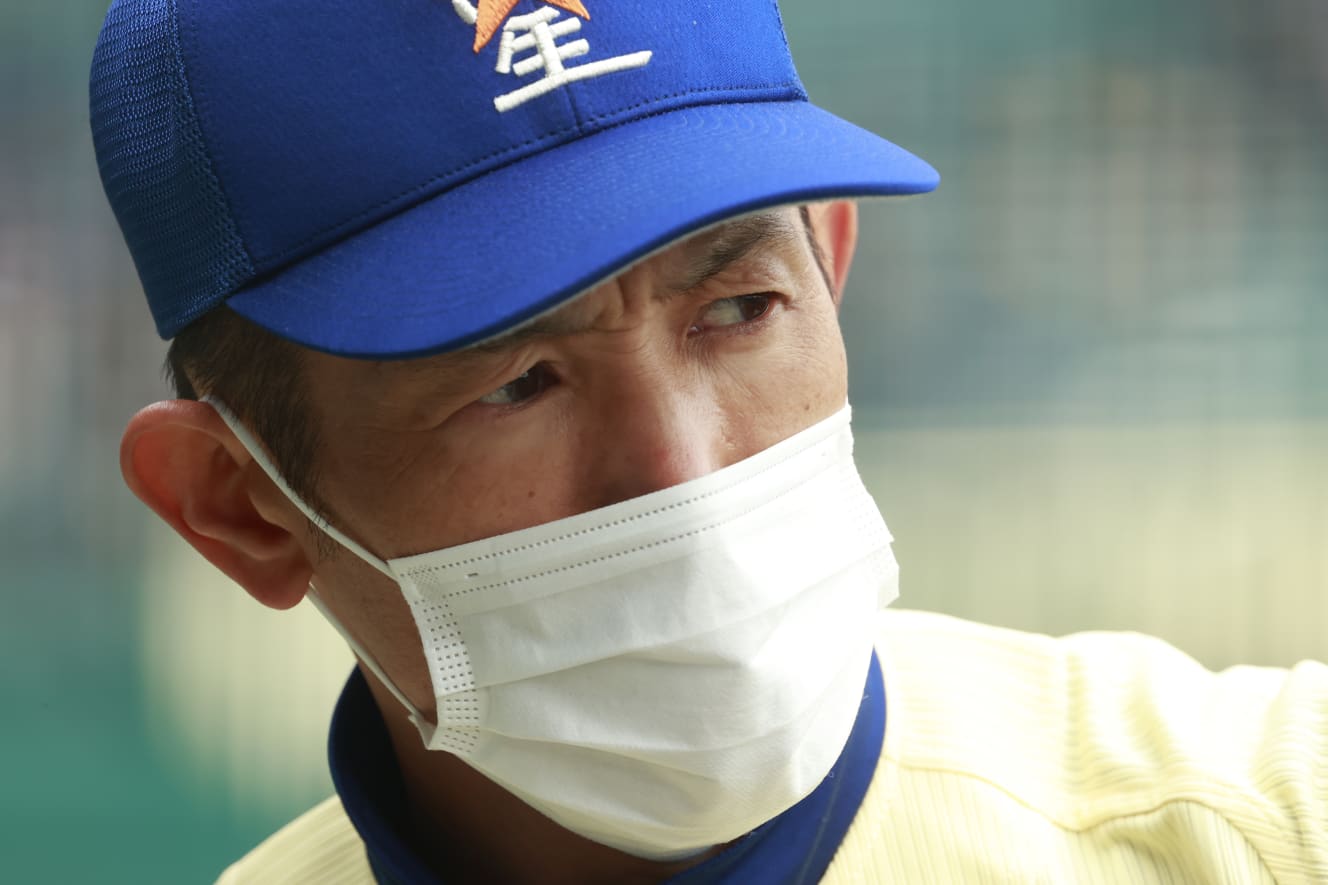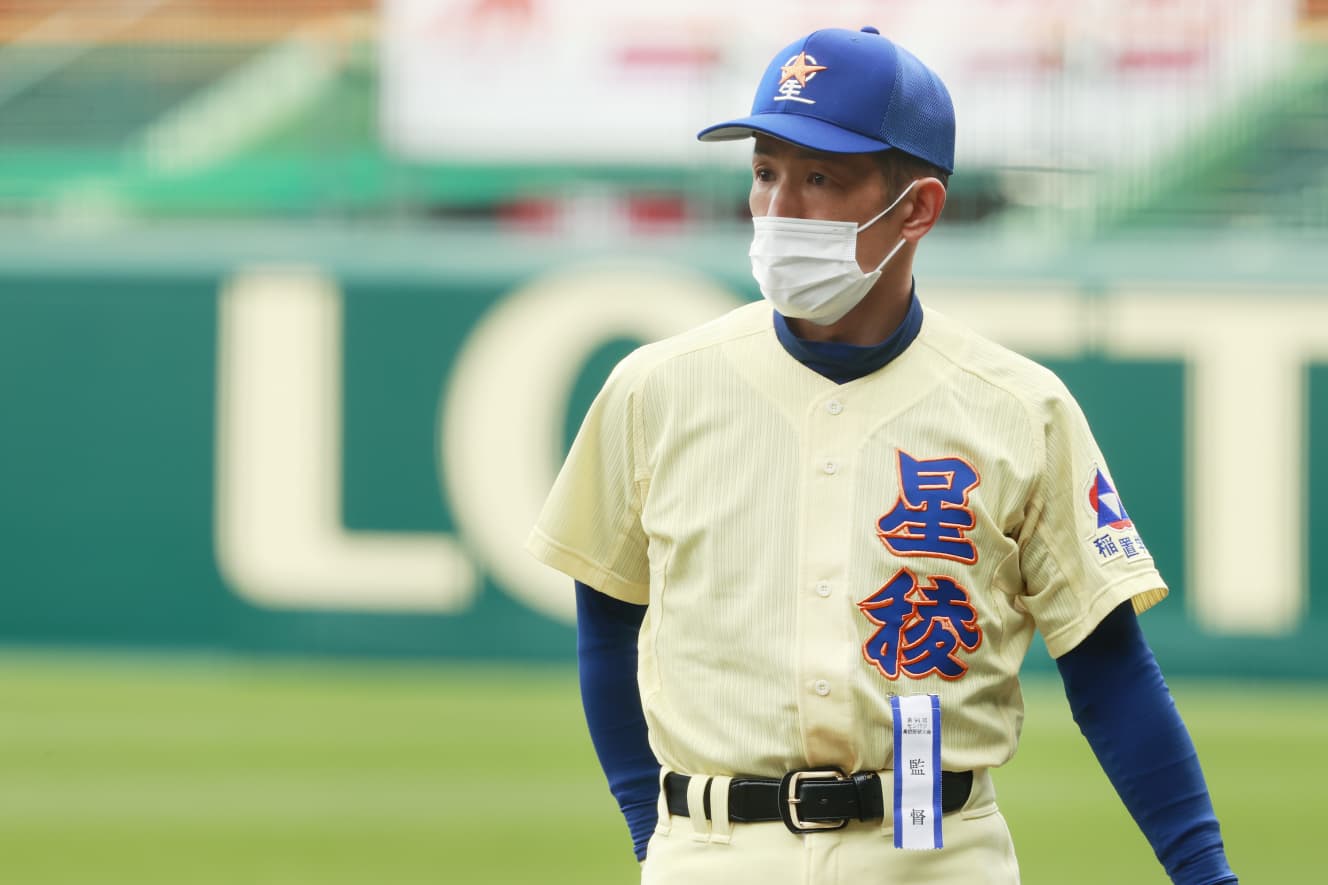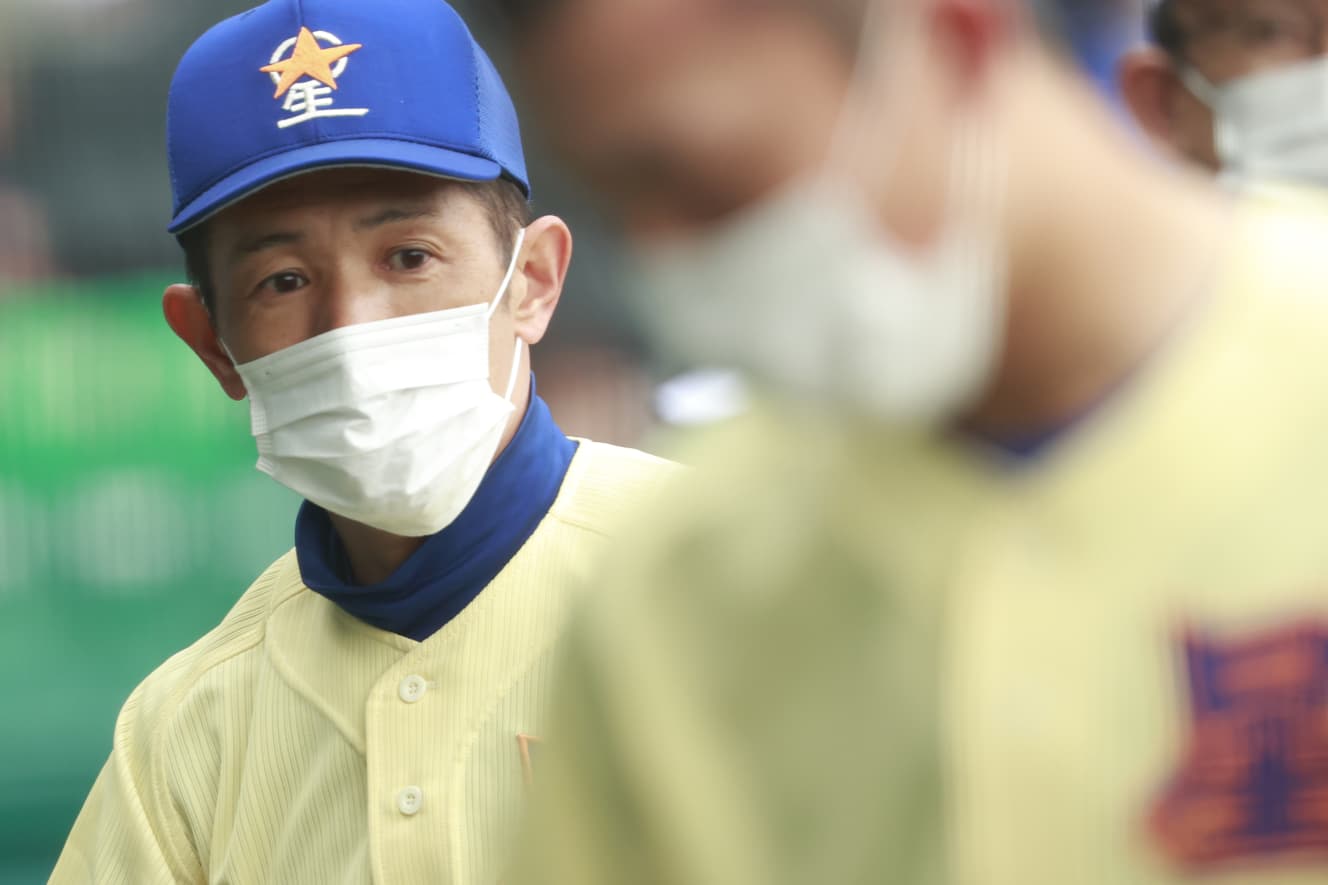Seiryo Coach Kazunari Hayashi Retiring After 11 Years of Service — This is His Take on Overcoming the Setbacks
Inside report on the 2010 Sembatsu
Kazunari Hayashi, who has been in charge of Seiryo High School for 11 years, is retiring. The words of former coach Yamashita, Hideki Matsui’s five consecutive defeats, and his tumultuous coaching career were only possible because he was “a man with nothing else to do but play baseball. Now, that man is taking off his uniform.

It’s going to be interesting!”
We were outclassed. Seiryo (Ishikawa), facing Kokugakuin Kugayama (Tokyo) in the quarterfinals of the Sembatsu tournament, trailed by two runs heading into the ninth inning. Still, Seiryo coach Kazunari Hayashi told his players in a circle, “We’re going to win this game.
It’s going to be interesting. I want to see you guys turn things around. Go turn it over! I’m on it! I’m not.”
Things are getting interesting. The key word for the current team, when they had to refrain from practicing in mid-January due to a corona positive case on campus. When a coronary positive case was found on campus in mid-January and the team had to refrain from practicing, coach Hayashi spoke to the nine members on line. The key to success is to show how you can recover from adversity. It is a technique to control the players to take a negative element and turn it into a positive one.
This was also the case at Koshien. In the first round game against Tenri (Nara). When the game went to extra innings, he said, “This is going to be interesting. In the end, Seiryo scored two runs in the 11th inning to win the matchup. In fact, Tenri was the opponent they lost to in the quarterfinals of the tournament 30 years ago. It was quite dramatic because Hayashi played with Hideki Matsui, who was a year older than him, in that game.

A tumultuous life as a manager
Since becoming manager of his alma mater in 2011, Hayashi has made four appearances at the Koshien Tournament in the spring (including 20 years when the tournament was cancelled) and five in the summer, going 11-8 before the tournament. The team’s miraculous win came in the bottom of the eighth inning when they overturned an eight-run deficit.
In the summer of 2006, the team lost to Saemi (Ehime) on a tiebreaker in the 13th inning, the first time in its history, after hitting a homerun with the bases loaded in the extra inning. He has had quite a tumultuous coaching career.
This year, he will be retiring at the end of this year.
He was on the bench from his freshman year at Seiryo High School, and in the summer of 1991, the team finished in the top four in the Koshien Tournament, losing to eventual champion Toin Osaka in its first appearance. In the spring and summer of the following year, 1992, he stepped on the sacred ground again, and played semi-hardball at Nihon University, where he went on to higher education. In his senior year, when he was captain of the team, he won all five championships, including the national tournament. After graduation, he thought he would either find a job in the Kanto region or take over his family’s construction business.
However, the baseball manager of Seiryo at the time asked him to come back as a coach. He was torn. He had never considered coaching as an option. Then, at a family meeting, his sister tearfully persuaded him, saying, “You have come this far, so you should do your best in baseball.
I started playing baseball under the influence of my father, who is a baseball fan, and my parents have been with me since I was a little girl. My sister was not taken care of much by my parents, and she probably hated baseball. My sister was a big encouragement to me, and I decided that I would do it. It was a big turning point for me.
When you start sleeping on the ground, you’re the real deal.
In 1998, he became a coach at his alma mater, and while studying coaching methods under his former coach, Tomoshige Yamashita (now Director Emeritus), he attended an affiliated university to obtain a teaching license.
At the time, Seiryo was somewhat inactive. In the prefecture, Kanazawa and the upstart Yugakukan were growing in strength, and after Yamashita retired in the summer of 2005, Seiryo made it to Koshien in the summer of 2007, but lost in the first round. Immediately after Hayashi took over, Seiryo won the prefectural championship in the spring of 2012 and reached the final of the Ishikawa Tournament in the summer, but lost out to Yugakukan 0-6. Hayashi says, “We lost to Yugakukan 0-6.
Every time we lost, we got more and more determined to win. “ I think it’s time to replace the coach. “ At that time, I was sleeping by the school field after the game. I was so dragged down by the loss that when I went home, I thought I would never be able to come out to practice the next day. But then Mr. Yamashita came to see me.
Former coach Yamashita is a legend of the Koshien, and his 18 extra innings against Minoshima in the summer of 1979 will always be talked about as a gem, as will his second-year ace Shogo Yamamoto (ex-Kintetsu, etc.), who won second place in the summer of 1995.
We don’t usually talk much, but when we did, he was a great general. 1 He talked to me for about an hour. And finally “ When you start sleeping on the ground, you’re the real deal. That’s how I used to sleep. “ And. I was happy. In the end, that day, I asked Dr. Yamashita “ Go home. “ I went home.
Hayashi and Seiryo made their first appearance at Koshien one year later in the summer of 2001. In the final of the Ishikawa Tournament, they defeated Yugakukan, whom they had defeated the previous year. Since then, Seiryo has made it to the big stage every year. The most impressive of these victories was the 35 consecutive wins in the Ishikawa Tournament from the fall of 2005 to the fall of 2007, a streak of seven consecutive championships.
Matsui 5 Reflecting on Coach Mabuchi’s leadership of “Keiton
The foundation of his leadership is based on a great experience: the summer of 1992 at Koshien. Seiryo, who had made it through the first round, faced Meitoku Gijuku (Kochi) in the second round, with Hayashi, a sophomore, playing second and shortstop, teaming up with Matsui at third and short as in the spring. After a walk to Matsui in the 3rd inning, he came home on a squeeze by the next batter.
In the 5th inning, Matsui led off the inning with a hit and after one out, Matsui drew another walk. Hayashi again came home on a timely groundout with two outs. Matsui also drew a walk in the 7th inning with two outs and no runners on base. In the 9th inning, with two outs and a runner at third base, Matsui drew another walk.
I didn’t find it as bizarre as the audience in the stands and thought it was just a tactic. As you might expect. 7 Inning. 2 With no outs and no runners on base, the “ You’re that thorough? “ I felt like I was in the wrong place, though. …… . 9 The times 5 After the fourth pitch, various things were thrown into the ground from the stands, weren’t they? I was on the third base bench at the time, so I remember running to pick up the megaphones and other items that had been thrown into the stands.
In the end, Seiryo succumbed, 2-3. Seiryo’s two goals were both scored by Hayashi at home, one by one. As Hayashi said, “If he would have won the game at some point, Matsui-san probably would have hit the ball,” and it can be said that Meitoku coach Shiro Mabuchi’s leadership was on target.
I was about the same age as Mabuchi when I became manager. Then, could I do that? ? Can you be that thorough in winning? ? I don’t think I will ever be able to do it. I think Mr. Mabuchi had that much conviction, which is why he later became the best in Japan. …… Looking back on it again now that I’m a leader, it’s a very big game.”
It was last September that Director Hayashi, who thought that 10 years would be the end of his tenure, informed his players of his resignation. The team, which united to “play baseball with Mr. Hayashi for as long as possible,” played 13 games, from the Ishikawa prefectural tournament in the fall to the Honshinetsu tournament and the Senbatsu tournament this year, mostly with upperclassmen, despite coach Hayashi’s assumption that “no one will probably become a regular once the underclassmen join the team.
I am “ As long as possible. ……” I told them not to think of me as such, but I am glad the players feel that way. 10 I said a year, but a full 11 years. 1 Please give me an extra year in Corona. ( LOL! ) “

If we could fight Osaka Toin at the Sembatsu stage ……

Seiryo scored two runs in the ninth inning against Kokugakuin Kugayama, but lost the game when the next two batters were hit out of order. 2-4. Before leaving Koshien after 21 games in charge, Hayashi , who said he “burned the scenery in his eyes,” shook hands firmly with Osaka Toin coach Koichi Nishitani, who came to the same third base bench for the next game. The two exchanged a few words.
I can only guess, but I suspect that they exchanged words like, “I wish we could have won and fought each other. Since Osaka Toin made it to the top four, if that had been the case, it would have been “interesting” to play against an opponent who made his Koshien debut as a high school coach, Hayashi.
Seiryo will be led from now on by coach Tatsuji Tanaka, who developed Seiryo Junior and Senior High School into a powerhouse. After his retirement, Hayashi says he intends to support the team “as a teacher and a baseball fan. I just worry that he will be so busy with games and practices that his weekends will be completely empty.
Interview and text: Junko Yang